Хаас за Австралия
Ромен Грожан:
Haas F1 Team tested at Barcelona for eight days over a 12-day span. How did it go and how did it prepare you for Australia?
It went well. You could really see a difference from last year when we had our first winter test. The team was much more ready, everyone knew what they had to do. We had a few small problems, as you would expect, but generally everything was sorted very quickly. We got some mileage that was very good. Everyone was back to work discovering the new car. It went well. I don’t think you’re ever fully prepared to go to Australia with only four days driving the new car. It’s the same thing for everyone, so we have to make the most of it.
How would you describe the VF-17?
It’s a pretty sexy car. It’s got a lot of potential, which we haven’t unlocked yet. It’s a good baseline, though, and so far it feels pretty good to drive. There are a few things I’d like to improve and make better for the first few races, but I think it’s a car that should give us some good races.
Much has been made about how physical these new cars are to drive. After testing in Barcelona, how did your body feel?
I didn’t feel too bad. But let’s put it this way, if I’d been in the same condition as I was last year, I would have been destroyed. We pushed really hard in our training. We may actually have overdone it. It’s not as bad as we thought it would be. The cars are going to be challenging and some of the races this year are going to be epic, especially where it’s warm with a high-speed track, it’ll be very hard on the body. I like the challenge and I like to think that we can always get more prepared and better trained. It felt good as we did the proper training. The cars are much harder to drive than last year.
Was there any particular area of your body where you felt the effects of increased g-forces?
No. I think the whole body, in the first week of testing, was getting back used to it. The neck is painful, and the back, you’re getting used to the positioning of your legs. In the second week everything feels much more normal. No real big aspects from testing, but as I said, we had pushed the training hard and that’ll be the case again before Australia, before China and the early part of the season. We’ll build more muscle and make sure all the areas are covered.
Tires are 25 percent wider this year, but have you noticed any change in the characteristics of the various tire compounds or have they remained consistent from last year?
I think Pirelli did a good job in making the tires more forgiving and less sensitive to overheating. Hopefully that will allow us to follow another car closely, slide a little bit and not overheat and lose grip. Let’s see if it is as we think it will be on the track. If so, we can push the car much harder and have more fun.
With lap times coming down by roughly five seconds, where is the time being found? Corner entry? Corner exit? Both?
Both, and mid-corner I’d say as well. The high-speed is much faster and low-speed we brake later and we carry more speed. Basically everywhere except from a straight line where we’re losing time.
The Ferrari 062 appeared fast and reliable in testing. How did it feel compared to last year’s engine?
It felt pretty good. Ferrari has made a good step. The drivability was very good. We haven’t yet had qualifying maximum power, which you only get at the racetrack, but I’ve got a good feeling that this engine is going to be nicely pushing us on the straight.
Speed is obviously the name of the game in racing. But with new cars built under new regulations, how important is reliability, particularly at the start of the season?
Reliability early in the season is always tricky. All the cars have more stress, more g-forces, and so on. All the designers have been working hard trying to understand what the requirements are and that’s why we go winter testing, as well. We try to see where there are areas we can make things better. Clearly in the early season, there’s always a chance that reliability is not perfect, but you can gain from that.
Haas F1 Team’s debut at last year’s Australian Grand Prix was pretty remarkable, with your sixth-place finish the best debut for any Formula One team since 2002 when Mika Salo finished sixth for Toyota, also at the Australian Grand Prix. Can you describe that moment and what it meant for you and the team?
It meant a lot. It was a result we were clearly not expecting after a tough qualifying. We had a brilliant race. When we took the checkered flag, for us, it was clearly as good as winning the race. It was fortunate, but perfect.
Did that result validate your move from Renault to Haas F1 Team?
I didn’t need that to validate the move. I knew the day I signed that it was the right choice for my career. Of course, good results are always a good thing, but I was already convinced that I’d made the right choice.
How important is it to start the year with some point-paying finishes, as it can give the team some cushion for the rest of the season when some of the bigger teams further develop their cars?
I think this year it’s actually going to be the opposite. This year, if you had to choose, I think you’d want to start slow and finish hard, and not the opposite. This is because in 2018 the cars are going to be very similar to 2017, and therefore if you’re finishing on a high it means you’ve understood the regulations and everything’s going well. Your next car will be on that trend. We really want to keep the development going and push through the year, improving race after race.
What are your goals for the season-opening race in Australia?
I don’t really set goals. Let’s see how it goes. We’ll do our best and, hopefully, we’ll remember it as well as Australia 2016.
What is your favorite part of the Albert Park Circuit?
I love the backstraight with the high-speed corner – turns 10 and 11.
Explain a lap around the Albert Park Circuit.
Going down the main straight and heading into turn one, you always get the sun in your eyes. It’s quite a nice corner, right inside corner, fourth gear with a little bit of inside curb then outside curb. Turn three is a bit of a tricky corner. You have to be careful on exit and well placed for the next left, which is turn four. Turn five, if you’ve got a good car, it’s flat out. Turn seven is then a right inside corner in third gear. It’s quite a good corner as well, with a bit of a tricky curb on exit. Turn nine requires big braking. Total application is very important because you’ve got the backstraight and you’re very close to the wall on exit.
Then you have my favorite corners between (turns) 11 and 12 and 13. It’s high speed, sixth gear probably. It’s a good feeling. Going into (turn) 14, you have lots of braking as you’re carrying quite a bit of speed in there. (Turn) 15 needs just a bit of a lift off (the throttle), right inside corner, pretty cool to drive. You then need to be well positioned for the last braking point into the left-hand side, where it’s quite tight. The last corner you want to stay flat out, but it’s a bit of a tricky one with a bump in the middle.
I enjoy Albert Park. It changes a lot during the weekend. It’s not a permanent circuit, so the grip is changing a lot. The race start is quite late, but it’s one of my favorite grand prix. It’s not an easy track to get on with. It’s very hard on fuel consumption as well. For the first race of the season, it’s going to be interesting.
Кевин Магнусен: Haas F1 Team tested at Barcelona for eight days over a 12-day span. How did it go and how did it prepare you for Australia?
I think it went well. On my days I got a lot of laps, lots of kilometers, and some very good testing done. It was good to learn about the car, especially this year with the cars being very different to last year. It was very useful. Now I’m just waiting to get back in the car in Australia and get racing again.
How would you describe the VF-17?
I think it’s fast. The first impression you get when you drive it is how much grip there is. The thing about this year is that everyone has gained a lot of grip and I’m sure everyone had that impression when they got back in their cars. Hopefully, we’ll be competitive. Hopefully, it’s a car that we can work with and improve over the year. The first feelings are positive.
Much has been made about how physical these new cars are to drive. After testing in Barcelona, how did your body feel?
After the first day it was a bit tough. I could definitely feel my neck. After my second day, and for the rest of the test, I was fine. It’s good to feel that the work had paid off and that I’m fit enough to race. I’ll keep working, and I’m even more motivated to train now that I can feel the difference. That’s really good.
Was there any particular area of your body where you felt the effects of increased g-forces?
The neck was the big one. I could even feel it in my legs, keeping my knees apart, and just keeping my legs upright. That was certainly something I’ve never felt before through the corners. My glutes were being worked in the car, which was something completely new. It’s good to feel that. It’s what we want. We want to go fast and we want to be pushing the car hard. These cars allow that.
Tires are 25 percent wider this year, but have you noticed any change in the characteristics of the various tire compounds or have they remained consistent from last year?
It’s still a little early. It’s hard to even say after the test in Barcelona because the temperatures were not representative of a lot of the races we’ll do. Some will be a little cold, but I guess in Australia we could be in a situation where temperatures will be the same as Barcelona. In that case, the tires are going to behave well. They are durable and you can push them hard. You can push relatively hard for a whole stint. We’ll see when we get to the hotter races how the tires behave.
With lap times coming down by roughly five seconds, where is the time being found? Corner entry? Corner exit? Both?
It’s both. It’s from when you hit the brakes to going full throttle. That’s the place we’re gaining the time. You could say we’re gaining more than those five seconds in the corners because we’re then losing time on the straights compared to last year. We have to gain more than those five seconds back in the corners. It’s pretty impressive.
You have the honor of being the only person to have sampled each current Formula One engine supplier – Mercedes and Honda with McLaren, Renault with Renault Sport F1 and now Ferrari with Haas F1 Team. How does the Ferrari 062 feel compared to those other engines?
To be honest, none of the engines feel very different. They all seem pretty similar. They sound a bit different, and operationally they’re slightly different engine to engine, but the Ferrari is very easy to work on. It’s easy to understand and the drivability is very good. Also, the power seems to be good this year, so I’m very happy.
Speed is obviously the name of the game in racing. But with new cars built under new regulations, how important is reliability, particularly at the start of the season?
It’s important every race. Reliability is number one. You need to be able to finish a race, and then you can make it perform well after that. We were reliable in testing. We didn’t have any big issues with the power unit at all in testing, and neither did Ferrari. I think that’s a good sign and the power seems to be good as well. No complaints.
Haas F1 Team had a remarkable debut last year in the Australian Grand Prix. And in 2014, you also had a remarkable Formula One debut at Australia, starting fourth and finishing second to Nico Rosberg. How were you able to achieve such a strong result in your first Formula One race?
I think I just went into it with a smile. I enjoyed it. I didn’t really think too much about the race. I had nothing to lose. I just went for it. I drove at my best, had a bit of luck as well, and I ended up on the podium. It was a great experience and a memory I will have forever. It’s always going to be quite cool to say that I finished second in my first Formula One race, although it would have been nice to win. I’ll do that another time.
How important is it to start the year with some point-paying finishes?
It’s always important to have a good start to the year just to kick-start everything. It gives you a boost to have a good beginning. The end is important too, but it’s always nice to start off the year with a good race. We’ll do our best and see what we get.
What are your goals for the season-opening race in Australia?
My goal for the season, and it’s the same for the team, is to try and improve on the result from last year, which was very good. Going on to then finish eighth in the constructors championship, with 29 points, was a great result for a first-year Formula One team. To improve on that, even just a little bit, would be a good target.
What is your favorite part of the Albert Park Circuit?
I think turns one and two are quite cool. I also like the faster bits like turns eight and nine, and through the big chicane.
Explain a lap around the Albert Park Circuit.
It’s a bumpy track, especially at turn one, which makes it a bit difficult to brake late. If you don’t lock up there, that’s the first step to a good lap. You then have a slow section through turns three, four and five. Braking there is always tricky. You have a lot of shadows from the trees around the park. Finding your braking point is always difficult. You start going faster on the back. You have the big chicane and then, finally, you finish off the lap with a difficult section, including tricky slow corners through (turns) 14, 15 and 16.
Гюнтер Щайнер: Haas F1 Team tested at Circuit de Barcelona – Catalunya for eight days over a 12-day span. How did it go and how did it prepare you for Australia?
It went pretty well. We did a lot of laps, which is good. I think we ran a good pace. Some days were better than others, as normal in testing. All in all, I was very happy with the reliability of the car, and also the pace. We just need to keep the pace consistent, not like in testing, where it was on and off a little bit.
Obviously, a lot was learned at Barcelona, but there wasn’t much time between when the cars arrived back at the factory before they had to leave again for Australia. What did you do to make the most of that time?
You just bring the cars back to the logistics base in the UK where you prepare them as best as you can. You re-paint them so they’re like new cars, and the engineers sit down and go through a lot of data to try to find the right setups for when we go to Australia.
How have the new car regulations and increased lap times changed the dynamic of the car’s setup?
The car setup, you deal with it as you go along and with what the car is doing. There is no specific change to find a setup than it was before. It’s a different car and you need to go through the data, learn from it, and adjust the setup accordingly.
Tires are 25 percent wider this year, but have you noticed any change in the characteristics of the various tire compounds or have they remained consistent from last year?
No, they seem to behave differently, but it’s difficult to say at the first test in Barcelona as it’s cooler than normal. We tested some tires there, some compounds, which will never see Barcelona again in a race. So, we still need to find out a lot about tires, but I think it’s still the key to performing or not this year, just like it was last year. The little details we’ll find out when we get to the racetrack. We can compare last year to this year on the tires.
With lap times coming down by roughly five seconds, where is the time being found? Corner entry? Corner exit? Both?
Both. Corner entry and corner exit. The cars, by being wider, have more mechanical grip and more aero, and the cornering speeds are so much higher.
It’s been said that actual turns on the track aren’t necessarily considered turns anymore by some engineers if a driver takes them flat out. Is this accurate?
It’s accurate that you take them flat out, but they’re still a turn because otherwise you could go even faster. Turn three in Barcelona was flat out for most of the time. Again, I think it’s good for the sport to have these lap times decrease.
Have the new car regulations changed how engineers view certain portions of the track, particularly at the Albert Park Circuit?
You have to adapt all that you know to the new tires and the new aero specifications, but you just attack race weekends as you did before.
How has Kevin Magnussen assimilated with the team and the Haas VF-17?
He fits in very well. The team is very happy with him and I think I can say the same from his side. He seems to be gelling very well with his engineers and wanting to contribute so we can have a good season.
With Haas F1 Team’s second season-opener now upon us, how has the preparation for this year differed from last year?
This year I could see that we were better prepared, which is natural because we’ve already done one year. We know a lot more, which just comes from experience. We’ve got one year of experience. All our partners, Ferrari and Dallara, they were better prepared, again, because they had one year of experience. All in all, it went a lot smoother.
Last year, Haas F1 Team was starting from scratch, and that had its own unique challenges. To get ready for this year, you had to race your 2016 car while simultaneously developing your 2017 car. That’s what every Formula One team does, but this was Haas F1 Team’s first time doing so, and it’s why many pundits say your second season will be harder than your first season. What do you think? Is that accurate?
I wouldn’t say that normally the second season is harder than the first one, but a lot of people predicted that we would have big issues. But they predicted as well before the first year that we would have big issues, and we didn’t have them. The preparation was a lot better for us this year than last year, so I hope also the performance of the car is better. Anyway, testing went very well, and I hope we’ve got a little bit of luck, as well, in the first race, like we had last year, and can take points home. We know the second year is harder and so we tried to prepare as best as we could for it. Let’s wait a few races and then see what we’ve achieved.
Speed is obviously the name of the game in racing. But with new cars built under new regulations, how important is reliability, particularly at the start of the season?
Very important because as we saw in the test, a lot of teams can have issues. We were reliable, very reliable for the first test and, knock on wood, we stay like that in the first race, just because there is a chance to score points if others have problems.
What would you like to achieve in Australia?
Points!


















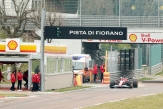
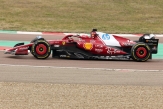
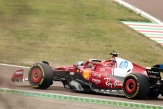

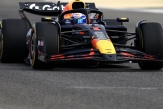
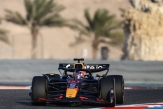
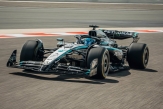
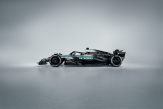
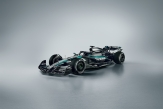
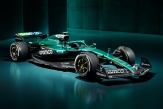
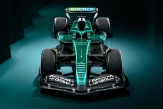
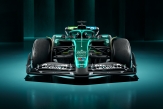
.jpg)
.jpg)
.jpg)
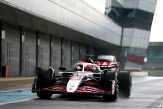
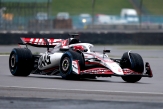
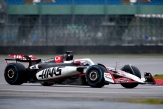
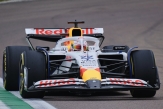
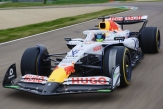
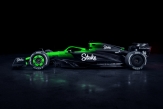
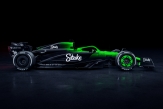

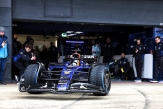
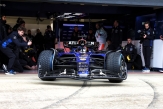
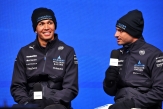

02/12/2025 от Огнян Тенчев (drJeckyll), няма коментари